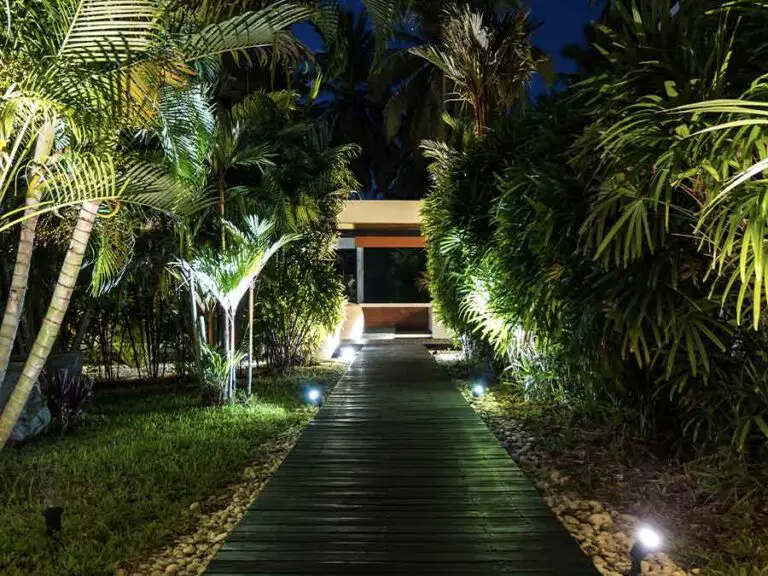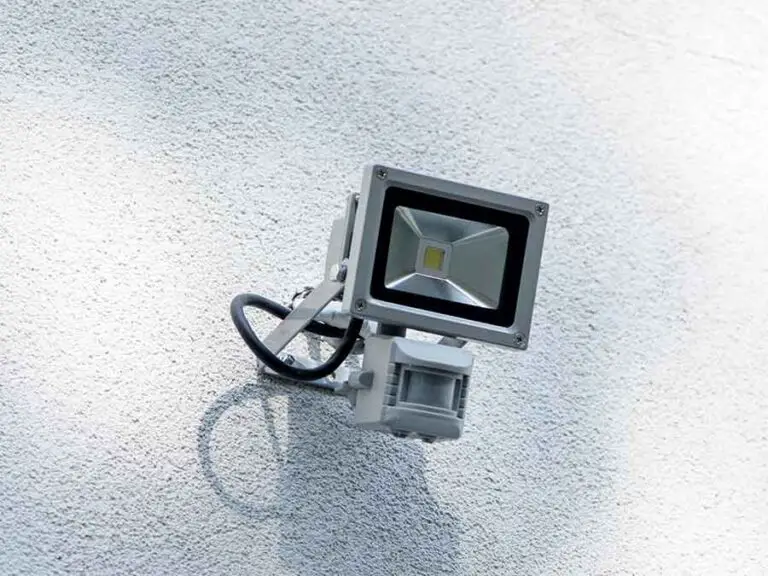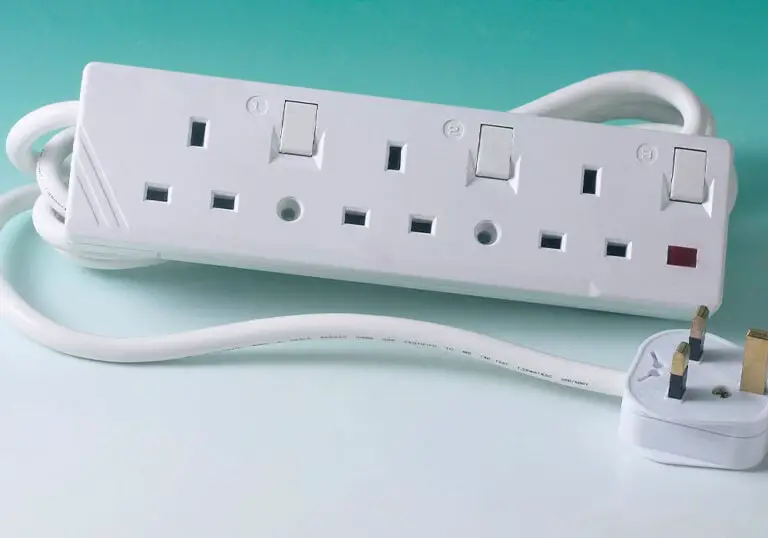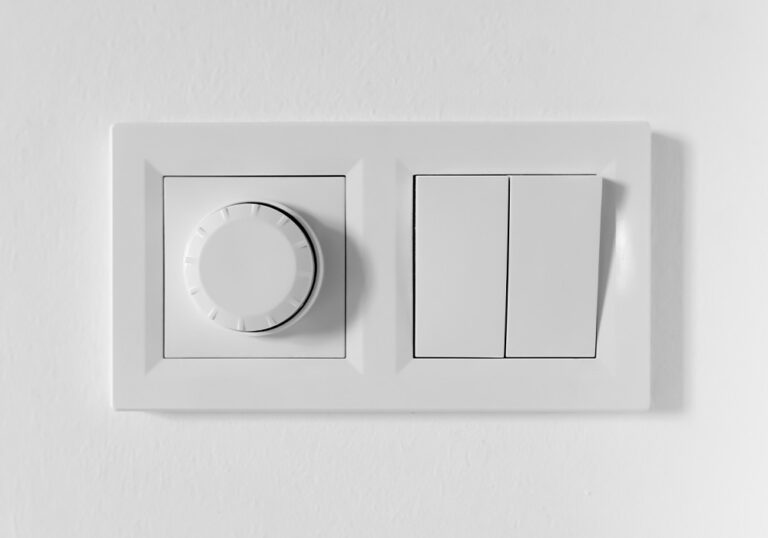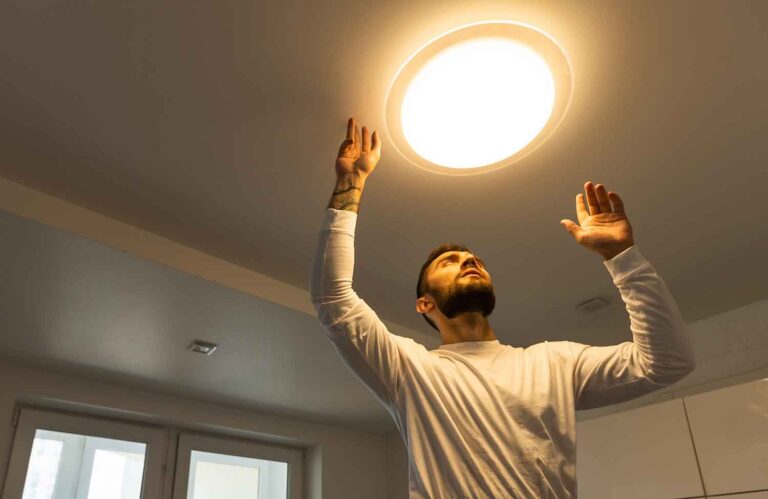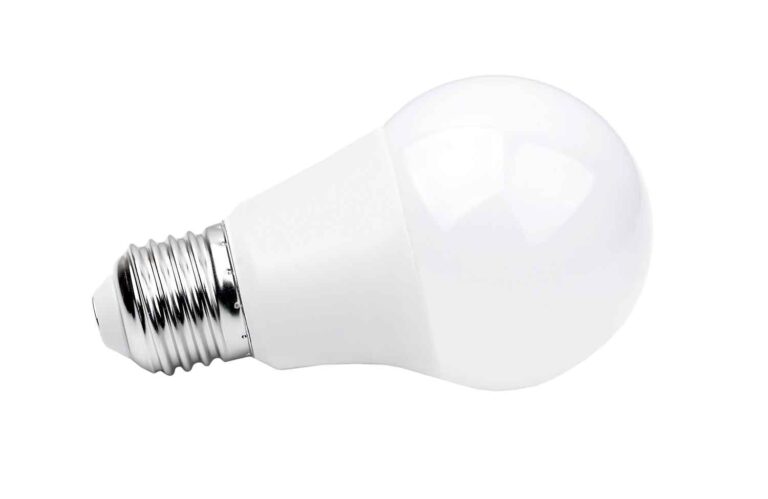How to Soften LED Lights: Effective Techniques Explained
LED lights have become increasingly popular due to their energy efficiency and longevity. However, their intense brightness can cause discomfort and glare, especially in home and office settings where a soft, ambient light is desired. Therefore, learning how to soften LED lights can help create a more comfortable and inviting atmosphere in various spaces.
To achieve softer lighting, it’s essential to understand the qualities of LED lights and the reasons why they might need softening. Their high lumen output and directionality are some factors contributing to harshness, but fortunately, there are various methods to address this issue. From choosing the right colour temperature to using diffusion materials, you can control the quality and intensity of LED lighting for your specific needs.
Key Takeaways
- Softening LED lights can improve visual comfort and ambience in various spaces
- Understanding LED light qualities and reasons for softening is essential
- Various methods to soften LED lights are available, such as colour temperature and diffusion materials
Understanding LED Lights
LED, or Light Emitting Diodes, lights are energy-efficient and long-lasting lighting options that you might want to use for your various applications. To ensure their effect is pleasant for your eyes, it can be essential to know how to soften LED lights.
LED lights function by passing an electrical current through a semiconductor material, causing the electrons inside to shift and release photons. These released photons form the visible light which is emitted. Unlike traditional incandescent or halogen bulbs, LED lights don’t create heat and last much longer, making them a popular choice for many installations.
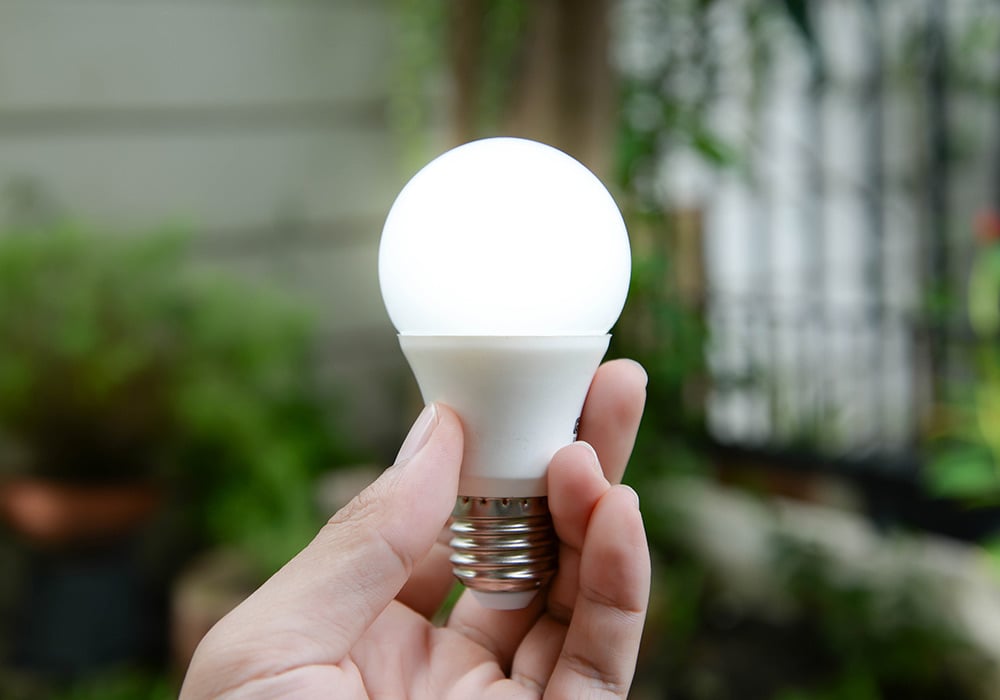
One of the main benefits of LED lights is their energy efficiency. They typically consume less power than traditional incandescent bulbs but produce the same amount of light, meaning you could save on electricity costs in the long run. Additionally, LED lights have a longer lifespan, which can save you time and money on replacements.
However, one potential drawback of LED lights is that they can create a harsh, intense light due to their focused and direct beam. This outcome can sometimes make the lighting uncomfortable or unsightly. Thankfully, various methods can be applied to soften LED lights, making them better suited for your needs.
- Diffusers: These are translucent or opaque coverings placed over the LED light that help scatter and soften the light. Diffusers can be made from various materials, such as plastic, polycarbonate, or glass. By adding a diffuser to your LED lights, you can reduce glare and create a more even distribution of light.
- Dimmers: Installing a dimmer switch on your LED lighting system allows you to adjust the brightness level according to your preferences. This method helps create a more soothing, ambient atmosphere and reduces the harshness of the light. Remember to check if your LEDs are dimmable before installing a dimmer switch, as not all LED lights are compatible with this solution.
- Warm White LEDs: LED lights are available in different colour temperatures, ranging from cool white to warm white. The cool white variants usually produce a more intense light that can be harsh on the eyes. Warm white LED lights emit a softer light, similar to traditional incandescent bulbs, which is more comfortable to look at.
By having a clear understanding of LED lights and employing these methods, you can achieve the desired soft lighting effect to improve the ambiance and presentation of your space.
Why Soften LED Lights?
LED lights are known for their energy efficiency and long lifespan, but they can also produce harsh and intense light. Softening LED lights can improve the ambiance of a space and offer a more comfortable lighting experience. There are several reasons to soften LED lights.
Firstly, LED lights can create glare, which may cause eye strain and discomfort. By softening the light, you reduce glare and create a more visually comfortable environment. This helps prevent eye fatigue and promotes better visual acuity, especially while working on tasks that require focused attention.
Another reason to soften LED lights is for better colour rendering. LEDs can produce unnaturally exaggerated colours, which may not be ideal for certain environments such as artwork displays or photography studios. Softening the light can help achieve more accurate colour representation, giving you greater control over how your space appears.
Moreover, LED lights can produce a cold, sterile atmosphere if the light is too harsh. Softened light creates a warmer, more inviting environment, which is essential when designing spaces for relaxation or socialising, like living rooms or restaurants.
In conclusion, softening LED lights serves multiple purposes, including promoting visual comfort, enhancing colour rendering, and creating a more pleasant atmosphere.
Methods to Soften LED Lights
Diffusion Materials
You can use various diffusion materials to soften LED lights. Common options include softboxes, diffuser panels, or even DIY solutions like parchment paper or cloth. Place the diffusion material between the light source and the area being illuminated. This method helps to spread the light evenly, reducing harsh shadows and glare.
Adjusting Brightness
Most LED lights have adjustable brightness settings. To soften the light, simply lower the brightness to a more comfortable level. If your LED light doesn’t have built-in brightness control, consider using a separate power source with variable voltage to adjust the brightness.
Using Dimming Techniques
Another way to soften LED lights is by using dimming techniques. There are different types of LED dimmers available, such as Pulse Width Modulation (PWM) dimmers and forward-phase dimmers. Choosing the right dimmer depends on your specific LED light model and its compatibility. Always check the manufacturer’s guidelines for proper dimming techniques.
Purchasing Soft LED Lights
If you want to avoid the hassle of adjusting brightness or using dimming techniques, you can purchase LED lights specifically designed to emit soft light. Look for products labelled as “soft white” or “warm white,” as these are designed to provide a more diffused, comfortable lighting experience.
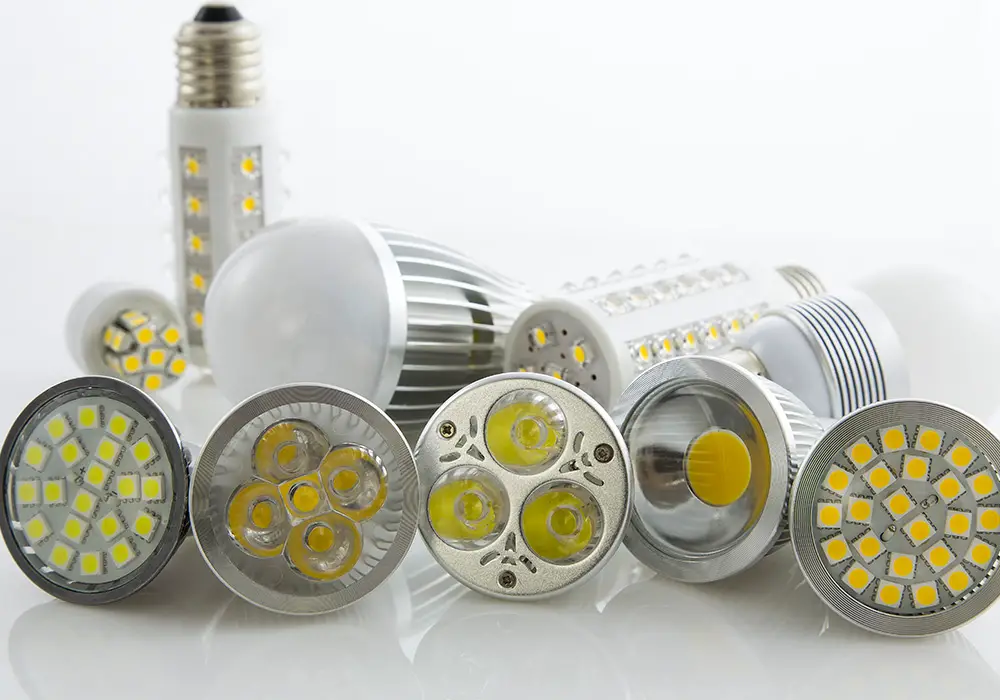
Safety Precautions when Softening LED Lights
When softening LED lights, it is crucial to keep a few safety precautions in mind. These simple measures will not only ensure your well-being but also extend the lifespan of your LED lights.
Firstly, always unplug your LED lights before working on them. This reduces the risk of electrical accidents and helps you avoid potential damage to the lights themselves. Make sure your hands are dry and free from any conducting materials to prevent electrical shocks.
When using diffusers or light modifiers, choose materials that are heat-resistant and non-flammable. LED lights might not emit as much heat as traditional bulbs, but they can still generate warmth over time. Safe materials for diffusers include parchment paper, gels specifically designed for LEDs, and durable heat-resistant fabrics that won’t melt or catch fire.
Be careful not to cover the ventilation holes on your LED fixtures while softening the light. These holes are designed to allow heat to escape, and covering them might cause the LEDs to overheat, reducing their lifespan and putting your workspace at risk. Always maintain a reasonable distance between the diffusers and the LED fixtures to allow for proper ventilation and heat dissipation.
Securely mount your LED lights and diffusers to avoid accidents. Make sure that your lights are firmly attached to stands or mounts and that the diffusers are securely attached to the lights or positioned safely within the scene. Double-check that all connections are tightened and that the setup is stable before you proceed with your work.
Avoid staring directly at LED lights, even when diffused. Prolonged exposure to bright LED lights, even when softened, can cause discomfort and potentially damage your eyes. Always use appropriate eye protection when necessary and take breaks to rest your eyes if working with LED lights for extended periods.
By following these safety precautions, you are not only protecting yourself but also ensuring the continued performance and longevity of your LED lights.
The Impact of Softened LED Lights on Visual Comfort
When it comes to visual comfort, softened LED lights can make a significant difference. The softer light produced by these LEDs is less harsh and intense than that emitted by regular LEDs, making it more comfortable for your eyes. Reducing eye strain is essential for maintaining overall visual health, particularly during long hours of screen time or when working under artificial lighting.
Having a more even and balanced light distribution is another advantage of softened LED lights. This helps eliminate strong contrasts and shadows, creating a better ambiance within the room. It’s particularly beneficial for various professional settings, such as photography studios or office spaces, where maintaining a visually comfortable environment is crucial.
To soften LED lights, you can use a range of tools and materials, such as diffusion panels, softboxes, and fabric diffusers. These diffusers spread the light across a wider area, reducing its intensity and providing a softer look. Each of these methods comes with its unique set of features and benefits:
- Diffusion panels: Lightweight, easy to install, and suitable for various applications, these are panels that can be placed in front of the LED light source.
- Softboxes: Ideal for photography and video production environments, softboxes enclose the LED light source and filter the light through a diffusing material.
- Fabric diffusers: Affordable and adaptable, fabric diffusers can be wrapped around an LED light source or mounted on a frame for customised light softening solutions.
Incorporating softened LED lights in your living or working spaces is not only visually comfortable but also promotes productivity, focus, and overall wellbeing. By choosing the appropriate light softening technique and materials, you can enhance the quality of illumination and create a favourable environment tailored to your unique needs.
Frequently Asked Questions about Softening LED Lights
Why do I need to soften LED lights?
You might need to soften LED lights because they can sometimes appear too harsh or cast unflattering shadows in photographs, video recordings, or even just in your everyday room lighting. Softening the light can create a more comfortable, natural ambiance while reducing eye strain and glare.
What are the common methods for softening LED lights?
Some popular methods for softening LED lights include:
- Using a diffuser: A diffuser can be made of translucent materials, such as fabric or plastic, and is placed in front of the light source to scatter and soften the light.
- Bouncing the light: By directing the light towards a reflective surface, such as a white wall or ceiling, you create a larger, indirect light source that appears softer.
- Adjusting the angle: Experimenting with the angle of your light can help reduce harsh shadows and create a softer lighting effect.
Is it necessary to purchase expensive equipment to soften LED lights?
No, it isn’t necessary to purchase expensive equipment to soften LED lights. While professional photography and videography gear can be pricey, you can achieve good results with affordable options or even DIY solutions. For example, you can use inexpensive fabric such as a white bedsheet as a diffuser, or repurpose a piece of foam board or cardboard as a bounce card.
What factors should I consider when choosing a method to soften LED lights?
When choosing a method to soften LED lights, consider your specific needs and preferences, such as:
- The purpose and desired effect of the lighting (e.g. for photography, videography, or general room lighting)
- Your available budget
- The size and layout of the space in which you’re working
- The portability and ease of use of the softening method
By considering these factors, you’ll be better prepared to select the right approach for your needs.

